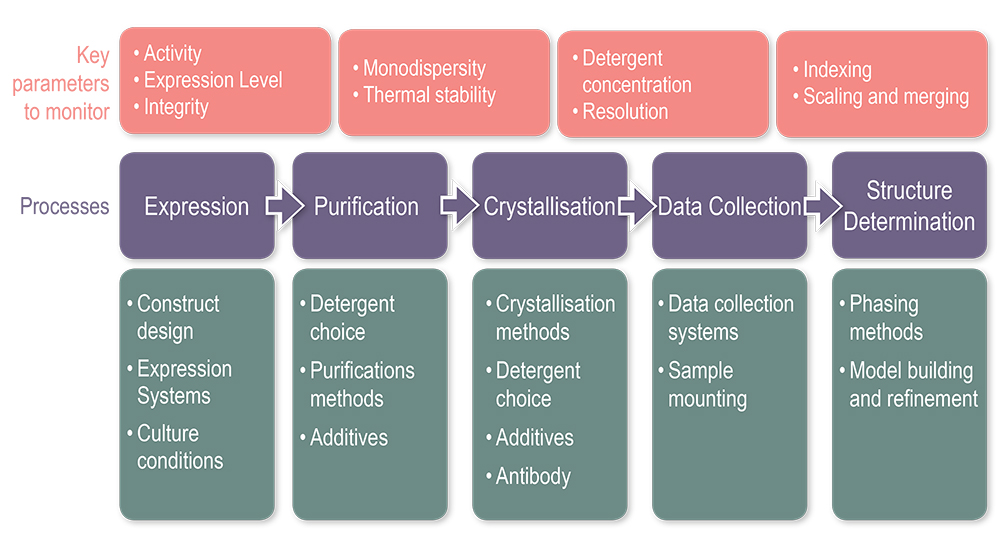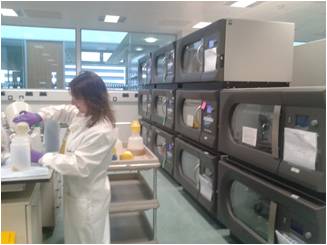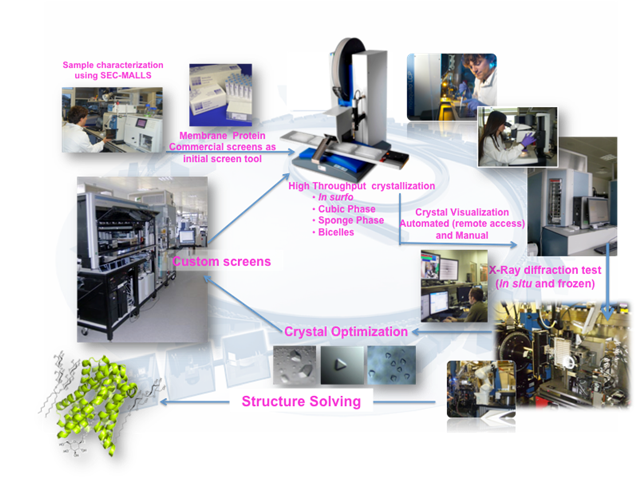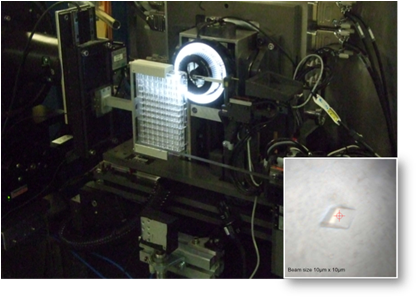The Membrane Protein Laboratory (MPL) at Diamond Light Source is a research and training user facility open to scientists from laboratories anywhere in the world that are interested in Structural Biology of Membrane Proteins. The laboratory combines recently developed high throughput technologies for protein production and crystallisation with the latest developments in X-ray diffraction data collection systems at Diamond's Macromolecular Crystallography (MX) beamlines.
Membrane proteins are important pharmaceutical targets with 60% of the current marketed drugs targeting this class of proteins. However, a major challenge in designing drugs to target membrane proteins is the need for high resolution structural information. With the MPL situated just metres from Diamond’s Microfocus MX beamline (I24), world-class expertise and tools are brought together to tackle this challenge.


The purification platform facility is composed of 150m2 of wet laboratory space at the Research Complex at Harwell (RCaH). The RCaH wet laboratory is operational with cutting-edge technology and equipment for the expression and purification of membrane proteins.
Yeast cells with GFP and His fusion tag construct are available for membrane protein expression at the MPL. Protein purification typically includes immobilised metal affinity chromatography (IMAC) using His-tag and size exclusion chromatography (SEC). The most suitable detergent(s) for the protein extraction are selected based on results from fluorescence-detection size exclusion chromatography (FSEC) using GFP tag. Subsequently, the protein(s) are characterised by size exclusion chromatography with multi-angle light scattering (SEC-MALS) before crystallization trials.
The equipment available at the MPL HTP purification platform includes:
 The crystallisation facility is composed of 140 m2 of wet laboratory space at Diamond in the synchrotron building. The facility is adjacent to the microfocus beamline I24.
The crystallisation facility is composed of 140 m2 of wet laboratory space at Diamond in the synchrotron building. The facility is adjacent to the microfocus beamline I24.
Methods available for crystallisation of membrane protein(s) are crystallisation from lipidic cubic phase (LCP) and vapour diffusion with sitting drops. The MPL uses commercially available crystallisation screens (MEM GOLD, MEM GOLD2, MEM MESO, MEM START and MEM SYS) as well as MPL customised screens for initial crystallisation screening.
The equipment available at the MPL HTP crystallisation platform includes:

Membrane protein crystals, especially those produced via the Lipidic Cubic Phase (LCP) method, are often very small, extremely fragile, poorly ordered (high mosaicity) and very sensitive to radiation damage. Collecting data from such crystals is not a straightforward task and the resolution of the X-ray diffraction data not only depends on the crystal quality but also on the beamline specifications.
The proximity of the X-ray source to the MPL provides a unique advantage in alleviating problems in crystal transport and facilitates a quick turnaround between design of an experiment and its execution. Diamond provides a platform combining recently developed high throughput technologies for protein production and crystallisation with the latest developments in X-ray diffraction data collection systems. This allows our users to characterise early stage crystal hits and swiftly determine their promise for optimisation trials leading to a rapid project progression.
Facilities available at Diamond include:
We’re always happy to discuss any enquiries or talk about ways in which access to Diamond’s facilities may be beneficial to your business so please do give us a call on 01235 778797 or send us an e-mail. You can keep in touch with the latest development by following us on Twitter @DiamondILO or LinkedIn
Diamond Light Source is the UK's national synchrotron science facility, located at the Harwell Science and Innovation Campus in Oxfordshire.
Copyright © 2022 Diamond Light Source
Diamond Light Source Ltd
Diamond House
Harwell Science & Innovation Campus
Didcot
Oxfordshire
OX11 0DE
Diamond Light Source® and the Diamond logo are registered trademarks of Diamond Light Source Ltd
Registered in England and Wales at Diamond House, Harwell Science and Innovation Campus, Didcot, Oxfordshire, OX11 0DE, United Kingdom. Company number: 4375679. VAT number: 287 461 957. Economic Operators Registration and Identification (EORI) number: GB287461957003.